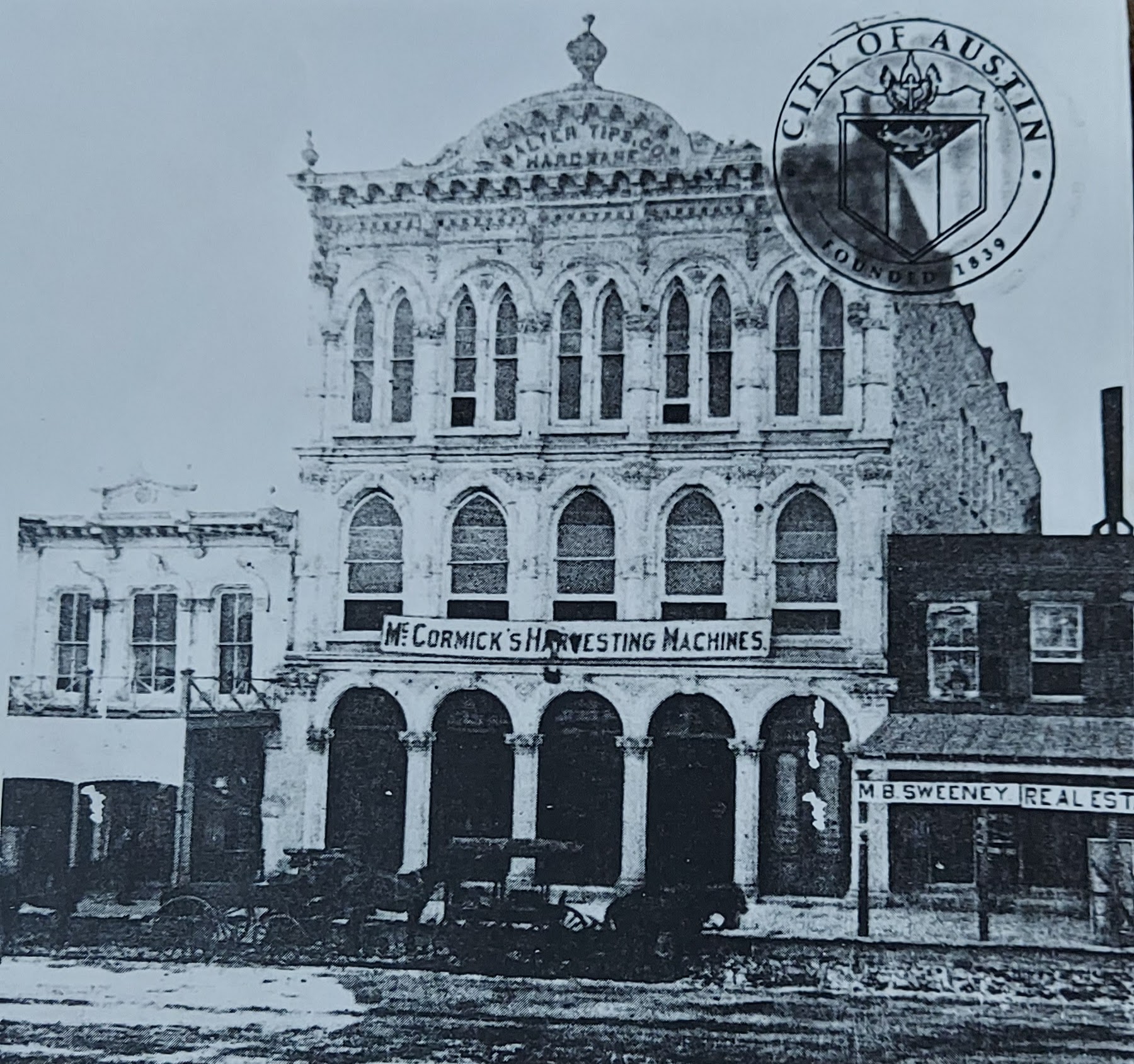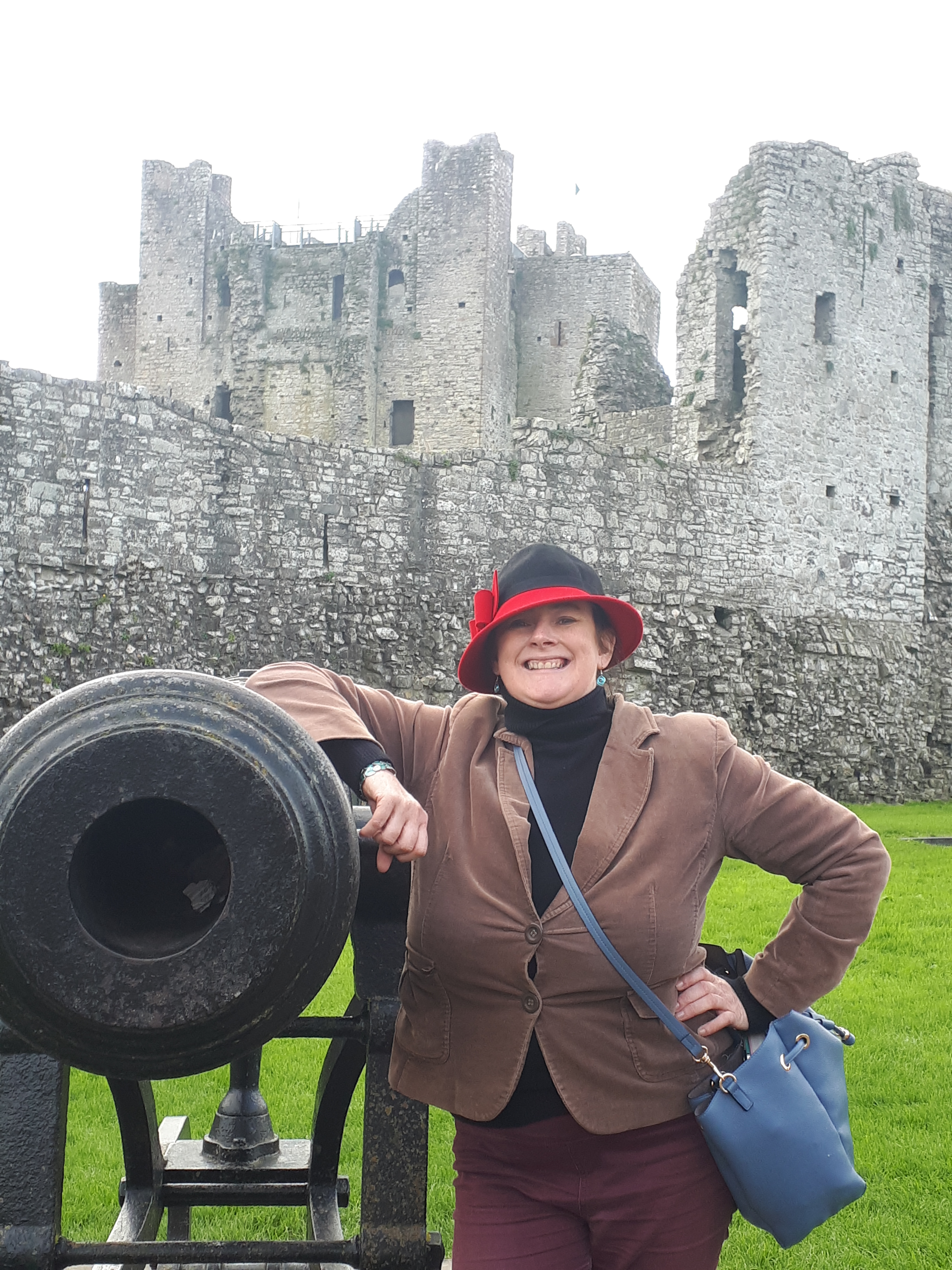Afterlife Suspicions
In every country, in every culture for all of time, the concept of spirit or the disembodied energy that originated from a once-living being has existed. Rituals, customs and superstitions surrounding the end of life help us to feel some element of control over the one aspect of life that many fear – death.
We carry corpses feet first, facing away from the mourners so the lingering spirit won’t catch the eye of one of the living, and beckon them to follow them into death. Originally black was worn by undertakers, mourners and family members to be inconspicuous, so as to not draw the attention of the lingering spirit, lest it decide to take you along. It was considered a bad idea to interfere with the funeral procession leading the corpse to its final resting spot, because it might impede the deceased’s journey to the afterlife.

Joseph Hanig was Austin’s Undertaker
In the 1800’s in Austin when your time was up and you were white, chances are your family would be doing business with Joseph Hannig at 204 East 6th Street, his colleagues and family. He owned the premier furniture/undertaker business in town. If you were African American, you would be taken care by the King establishment on East 6th.
The process would start with a younger member of the deceased family knocking on the cabinetmaker’s door to announce that a death had occurred. A Hannig family member would hurry over to the deceased’s home with a measuring stick or string to determine what size to make the coffin.
Once the coffin was built, it needed to be transported to the home of the dead person. It was a somber and yet exciting time in Austin when the dead wagon emerged from the alley behind the Hannig building. Children were sent to follow the wagon to see where it would stop and find out who had passed on.
The cabinetmaker/undertaker would go to the home and bring along his cooling board and/or embalming kit depending on the family’s choice. After the funeral service at the home, a parade would ensue and proceed east on 6th street, north on East avenue (IH-35 today), east again on15th Street and then into Oakwood, the city cemetery. Oakwood was founded on the highest hill east of Austin in 1839. Two men killed by Indians while digging post holes where Stubbs Barbecue is today near the corner of 8th Street and Red River were the first to be interred. At Oakwood, the undertaker would have made arrangements with the gravedigger.
Hannig Haunting
When we learned that the Hannig building was having some issues with ghosts, it was a natural leap to think it is because it is the old undertaker building.
The stories we heard were typical of all haunted locations, and surprisingly, nothing like what television shows and movies about ghosts depict. Contrary to what many have been led to believe, at least 90% of people who experience an encounter that they believe to be a ghost, don’t feel fear. Sure, they may have the “What the…!” reaction afterward, but that is fear coming from themselves, rather than the experience.
Most of the haunting events in the building are not dramatic and are the typical three most common forms of a haunting. The first is the movement of an object: in the upstairs offices of 204 East 6th Street desk items are rearranged on a regular basis. The second most common form of a haunting is a smell. It begins and ends, it is clearly out of place, and you know when it happens. An inexplicable floral smell is common in the back rooms of the B.D. Riley’s Irish Pub on the first floor of the building. The third most common form of a haunting is a feeling; the feeling you’re not alone, or the hair on the back of your neck standing on end. One of the managers who regularly opens B.D. Riley’s Irish Pub, after unlocking the door and while walking to turn off the alarm, feels as though he is being watched, and on many occasions can see out of the corner of his eye what looks like a man standing by the bar.
Embalming on Old 6th Street
Who is haunting the Hannig building? Well, it is not any spirits related to the undertaking business.
Due to the massive numbers of dead bodies during the Civil War, a method of preserving the bodies called embalming was discovered. This allowed bodies to be returned home for burial.
An incision was made under the deceased’s upper arm and a tube inserted. The blood was drained and replaced with an arsenic and water mixture.
The practice of embalming had begun in the North before the war. After the war, the Southern undertakers/furniture makers did not have the money or the resources to embalm. Consequently, traveling embalming salesmen from the North hit the southern states like flies on a carcass. They targeted the business owners in towns that dealt in death, such as the owner of the livery stable. They housed the dead wagon and the horses that pulled the wagon. A dead wagon could be fancy or plain. Its purpose was to carry a corpse. It had to be well ventilated, so it had windows on all four sides. The salesmen also sought out the local owner of the cabinetmaker/undertaker business. He/she was selling embalming kits which provided all the materials needed to perform an embalming. It included tubes, tools, and six glass bottles in what was called an embalming case.
Prior to embalming, a cooling board was used to hold the body before burial. A cooling board was a folding table on which the body was placed, and a block of ice put underneath. Holes were drilled into the board and vertical handles could be pulled out on either side and used to suspend a cover over the body so that the ice and cool air could circulate around the body.
Funeral Parlors on 6th Street in Austin
During most of the 1800’s all funerals happened in the home. The front room in the house or “the parlor” was where the funeral would take place. If there was no parlor a bedroom was used. Later when people stopped laying out their dead in homes, these rooms would be called “living” rooms. Establishments where the funerals took place retained the name “funeral parlor.” Funeral parlors as we know them today didn’t really emerge until the 1920’s following World War I.
While The Hannigs were in business, they were going to homes to assist in funeral preparations. Therefore, spirits haunting the Hannig Building apparently are not from the undertaking business. Much of the bar and décor in B.D. Riley’s was brought over from Ireland. Is it possible that a spirit was brought from overseas? Spirits can attach to objects. The Hannig Building has had quite a few occupants since the undertaking business moved on. Could it be any one of those? The answer is, we don’t always know who or why a building is haunted, just that it is.
Susannah Dickinson was Married to Hannig
The black haired, blue eyed Susanna Wilkerson was originally from Tennessee. She never learned to read or write. She married Lieutenant Dickinson when she was 15 years old and he was 30. Together, they moved to Texas. She was 20 years old when her daughter was born, and 21 in March of 1836 when her husband died at the Alamo. She survived the battle at the Alamo and became known as the mother of the “Babe of the Alamo.” Twenty months later she married again but divorced within four months. The grounds for a divorce – her husband abused Susannah and her daughter. Nine months later Susanna married another man. That relationship ended five years later when her husband died of digestive fever in the year 1843. Three years later, at the age of 32, Susanna married her fourth husband. Ten years later he would divorce her, accusing Susanna of adultery. They had been living separately for three years since 1857, before the divorce was final. Susanna married her fifth and last husband, Joseph Hannig, sixteen years her junior. The Hannigs moved to Austin in the early 1870’s after the death of Susannah’s only child. The couple remained married until her death at the age of 68 in 1883.
Researched and written by Jeanine Plumer
© Copyright 2022, Austin Ghost Tours. All Rights Reserved.








